It’s important to think of dog food as more than just a collection of random ingredients. Dog food is a collection of vital, life-sustaining nutrients. Just like humans, dogs need the proper nutrients in order to thrive. This is especially true if they’re super active. So, any conscientious pet owner should want to be fully aware of the nutritional value of their dog's food ingredients. However, interpreting nutritional value can prove quite a task with some package labels. But, with the right insight, you can determine the difference between good and bad dog food ingredients.
How to Check the Dog Food Ingredients
According to one survey, over half of the pet owners say that the ingredients are the most important factor for choosing a brand of dog food. However, brands with similar dog food ingredients may have different nutritional profiles. Many people are not aware that the ingredients can be the same but the amount or volume of each ingredient can vary widely.
So, if you’re a pet owner looking to provide the best for your furry friend, it’s important to understand how to read and evaluate a list of ingredients. In the United States, both the Food and Drug Administration Center for Veterinary Medicine and the Association of American Feed Control Officials (AAFCO) are responsible for regulating the production and labeling of pet food. Here are some requirements for listing ingredients on pet food packaging labels.
Understanding Pet Food Labels (Ingredients)
- According to strict guidelines set by the AAFCO, ingredients on the nutrition label must be listed in descending order of weight (including the weight of the water). In other words, the ingredients at the beginning of the list are present in higher amounts by weight than those further down the list.
- The first few ingredients listed are the primary protein, carbohydrate, and fat sources in dog food.
- Water is included in the weight requirements, so ingredients with high water content will be listed higher. These are most frequently meat proteins and vegetables.
- Canned food is usually 75 to 78% moisture by weight, making it 22 to 25% dry matter.
- Dry food is typically 10 to 12% moisture which makes it 88 to 90% dry matter.
- Pay attention to phrases manufacturers use to describe their dog food, such as Chicken Dinner or Chicken Dog Formula.
- According to the AAFCO, using the words “formula” or “dinner” in the product means that the primary ingredient in the name (in this case “chicken”) makes up at least 25% of the total weight.
- If the product is Chicken Dog Food or Chicken for Dogs then AAFCO regulations require that at least 95% of the total weight (not including water) is chicken.
- Be aware of products that use the words “with” or “flavor”. If a product's label reads "Dog Food with Chicken", then the amount of chicken must equal or exceed 3%. If the product is called Dog Food with Chicken Flavor, then the amount of chicken flavor simply has to be “sufficient [enough] to be detected”.
As you can see, there’s a lot you need to consider when paying attention to the ingredients and product names.
Why Pay Attention To Dog Food Ingredients?
Well, diet plays a major role in a dog’s health. For example, you may want to think about organic versus non-organic dog food ingredients. Organic dog food choices can have advantages over non-organic choices. For example, organic dog food is usually more palatable. Organic plants produce more flavonoids because they are not exposed to flavor-destroying pesticides or artificial additives.
Organic dog food should also be easier to digest, especially for dogs with digestive issues. Dogs who vomit or get diarrhea often may have fewer issues or the diet may stop the problem altogether. You may also notice your dog has less or smaller bowel movements because organic foods often use little to no fillers compared to non-organic dog food.
Balancing your dog's diet may seem difficult, especially if you don't know what nutrients a dog needs. So to make things easier here are some suggested requirements. Research indicates that a healthy dog’s diet should more or less break down as follows:
- Up to 50% from carbohydrates
- Between 2.5 and 4.5% from fiber
- A minimum of 5.5% from fat
- At least 10% from protein
Note that the breakdown of the nutrients listed above is intended for adult dogs. Dogs require different nutritional values at different stages of life. To compensate for this dog food manufacturers commonly produce formulations for puppies, adults, and senior dogs. Large breed dogs are considered adults after 15 months and smaller breeds are adults after 9 months. So you will have to feed a large breed puppy formulated food much longer than a small breed pup. Similarly, small breeds become seniors between the ages of 10 and 12, while larger breeds can become seniors between the ages of 5 and 7 years.
As you can see, paying attention to dog food ingredients helps owners make the right decisions for their dogs’ health and age. Besides ingredients, it’s also important to consider the quality control protocols of the dog food manufacturer. This way you can ensure that the ingredients are of high quality.
Healthy Dog Food Ingredients
When choosing dog food, read the label carefully and keep an eye out for the following healthy ingredients:
Whole Meat
Remember, protein is a necessity for your dog. The most common sources for whole meats are chicken, lamb, beef, and fish (like salmon) as well as wild game like rabbit or venison. Whole meats are especially nutritious because they contain various necessary amino acids.
Meat Meal
This is ground-up whole meat that has been dried to a water moisture level no higher than 10% of its weight. Its protein content is 65% of the weight and its fat level is 12% of the weight. Surprisingly, this means that meat meal actually has a higher protein percentage than whole meat.
Fish Broth
This adds moisture and enhances protein levels. It also contains plenty of Omega-3 fatty acids, which are just as necessary for dogs as they are in humans.
Flax Meal
Made from ground-up flaxseeds, it is extremely rich in both Omega-3 and Omega-6 fatty acids to help produce a soft, luxuriant coat and reduce cholesterol.
Beef, Poultry or Chicken Fat
Fat is an important part of your dog’s diet, but it’s best if it comes from a named fat source (like cows or chickens).
Organic Ingredients
Look for "organic" food choices. Non-organic dog food ingredients can include synthetic pesticides and fertilizers. Certain non-organic foods may also contain GMOs along with artificial preservatives, flavors, and colorings. Some research suggests that non-organic ingredients could be linked to the development of specific types of cancer.
Ingredients to Avoid In Dog Food
Now that we’ve looked at some of the healthy dog food ingredients, try to avoid dog food brands that have the following unhealthy ingredients or additives:
1) Corn
This is a useless filler ingredient that is a common allergen for many dogs.
2) Cornmeal
Manufacturers use this as a cheap binder. It’s difficult for dogs to digest and may cause allergic reactions.
3) Carrageenan
According to research done in 2015 by the Cornucopia Institute, more than 70% of canned pet foods contain this non-nutritive additive. Many companies use it as an emulsifier, thickener, and stabilizer. However, research indicates that carrageenan increases free radicals, induces inflammation, and disrupts insulin metabolism.
4) Sugar
This may be listed as corn syrup (like high-fructose corn syrup), sorbitol, sucrose, fructose, glucose, or propylene glycol. It’s a cheap ingredient that companies add to boost up the calorie count. However, these are “empty calories” with no real nutritional value and their consumption will likely cause obesity and/or diabetes.
5) Soy Flour
This is another cheap filler ingredient that frequently causes allergies.
6) Artificial Coloring
These can include Blue 2, Red 40, Yellow 5, Yellow 6, and/or Titanium Dioxide. Obviously, dogs don’t care about the visual appearance of their food and these coloring ingredients are potentially carcinogenic.
7) Ethoxyquin
This preservative has been deemed unfit for human consumption and has even been used as a pesticide on fruits. It’s been linked to kidney, thyroid, and reproductive illnesses in dogs.
8) BHA and BHT
These are both preservatives that have been banned from human use for being carcinogenic. Research indicates that they may also cause cancer in animals.
9) Animal Digest
These are various parts of unspecified animals that have been cooked down into a meaty, goopy broth and then sprayed on the food as a flavoring agent. There is very little quality control and it can come from 4-D animals – “dead, diseased, disabled, or dying” animals.
10) Animal Fat
They make this generic fat source by rendering animal fat or restaurant grease that is too rancid for human consumption.
As you can see, there are a lot of dog food ingredients that you should avoid giving your little one!
Healthy Ingredients You Can Add to Dog Food
If you want to really get creative, then you can take an already healthy dog food and supercharge its nutrient profile by adding the following ingredients:
Blueberries
These little fruits are chock-full of healthy nutrients for dogs. Blueberries have antioxidants and fiber as well as vitamins C and K.
Flaxseed
This is the whole seed of the flax plant and contains both soluble and insoluble fiber. As a result, flaxseed for dogs helps with digestion and in the prevention of constipation.
Folic Acid
This is a type of vitamin B that is soluble in water and essential to the metabolism of mammals.
Glucosamine
This supplement will help keep joints healthy and stimulate the growth of cartilage, especially when you pair it with chondroitin sulfate.
Cannabidiol (CBD)
This is a hemp extract that holds many potential benefits for canine health. CBD works with the internal endocannabinoid system in dogs to produce many positive effects. Many pet owners are using CBD to aid with digestion, nervousness, agitation, aggression, and more.
You can find most of these healthy additives in health food stores or online. However, you usually have to purchase the CBD from specialty shops, and even then you don’t know if you’re getting the really good stuff. It’s best to get CBD from a well-trusted company that offers a variety of products, including tinctures or treats.

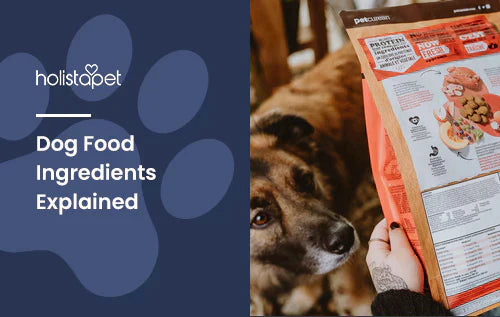
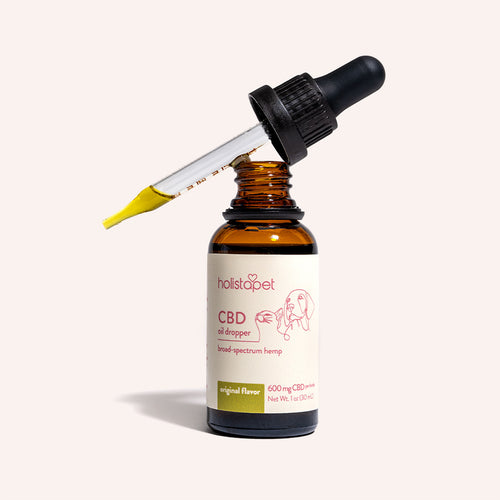 CBD Oil for Dogs - Fast Acting
CBD Oil for Dogs - Fast Acting
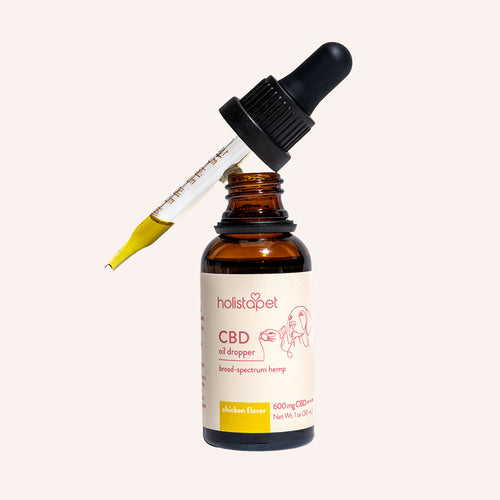 Chicken Flavored CBD Oil For Dogs - Easy Dose
Chicken Flavored CBD Oil For Dogs - Easy Dose
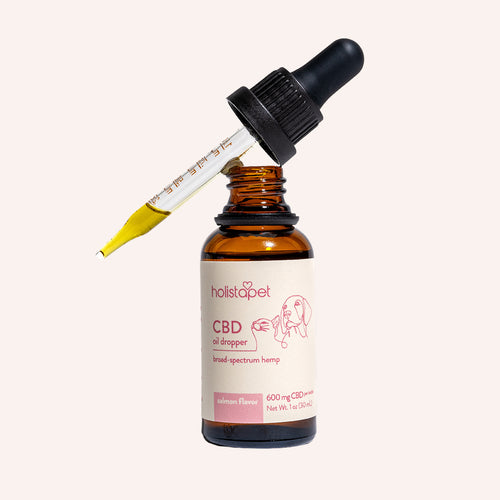 Salmon Flavored CBD Oil For Dogs - Highly Rated
Salmon Flavored CBD Oil For Dogs - Highly Rated
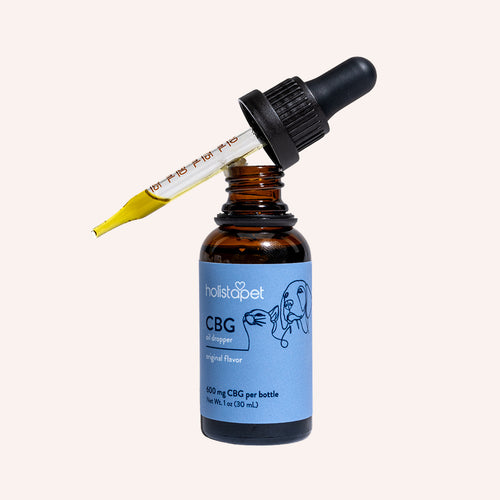 CBG Oil for Dogs and Cats - Loved by Thousands
CBG Oil for Dogs and Cats - Loved by Thousands


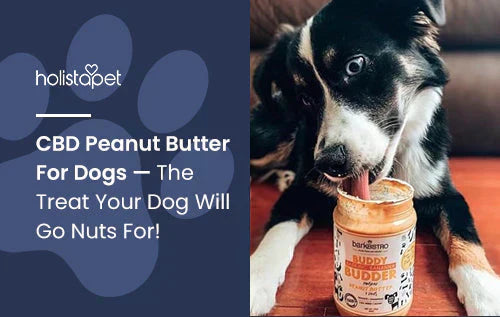


Leave a comment
All comments are moderated before being published.
This site is protected by hCaptcha and the hCaptcha Privacy Policy and Terms of Service apply.